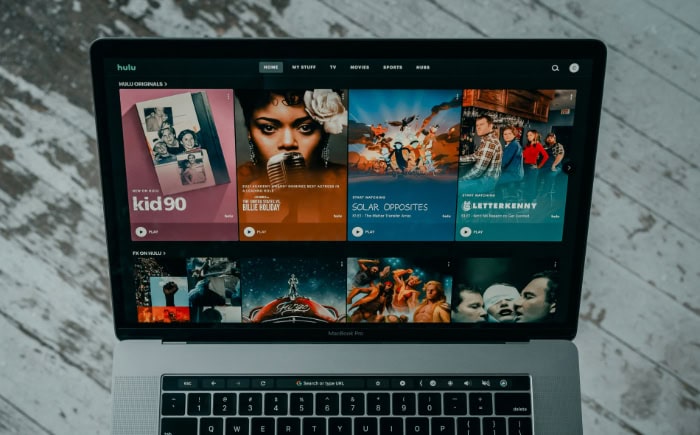What Is Transcoding? The Secret to Seamless Video Delivery

Have you ever wondered how your favorite shows and movies seamlessly adapt to different devices and internet speeds? The answer lies in the magic of transcoding. This powerful technology works behind the scenes to ensure that video content is delivered to you in the best possible quality, no matter where or how you choose to watch it.
Transcoding Fundamentals
Transcoding is a critical process in the world of video content delivery, ensuring that videos can be played back on various devices and networks. At its core, transcoding involves converting a video file from one format to another, optimizing it for different platforms and network conditions.
This process is often confused with encoding and transmuxing, but there are distinct differences between these terms.
Transcoding vs. Encoding vs. Transmuxing
Encoding is the process of compressing raw video and audio data into a digital format, such as MP4 or AVI. This initial step is essential for reducing the file size and making it suitable for storage and transmission.
On the other hand, transcoding takes an already encoded video file and converts it into another format, often with different specifications like bitrate, resolution, or codec. Transmuxing is a simpler process that involves changing the container format of a video file without altering its underlying video and audio codecs.
The Transcoding Process
Transcoding consists of three main components: decoding, processing, and re-encoding. First, the video file is decoded, breaking it down into its raw video and audio components.
Next, the processing stage applies various modifications to the video, such as resizing, color correction, or bitrate adjustment. Finally, the processed video is re-encoded into the desired format, ready for distribution to different devices and platforms.
Transcoding Techniques
Two common techniques used in transcoding are transrating and transsizing. Transrating involves changing the bitrate of a video file while maintaining its resolution and codec. This is useful for optimizing video quality based on available bandwidth.
Transsizing, on the other hand, focuses on changing the resolution of a video file, such as converting a 4K video to 1080p or 720p, to cater to different screen sizes and device capabilities.
Real-World Analogies: Transcoding in Action
To better illustrate the concept of transcoding, consider a real-world analogy. Imagine you have a recipe for a delicious cake that you want to share with friends who have different dietary restrictions.
To make the recipe accessible to everyone, you need to adapt it by substituting ingredients or modifying the baking process. This is similar to transcoding, where a video file is adapted to work on various devices and networks by changing its format, bitrate, or resolution, ensuring that everyone can enjoy the content seamlessly.
The Transcoding Process
Now that we've covered the basics of transcoding, let's take a closer look at how this process works behind the scenes. The transcoding workflow consists of several stages, each playing a crucial role in converting a video file from its original format to the desired output format.
The Transcoding Workflow
The transcoding workflow begins with the input video file, which is the original video that needs to be converted. This file is then decoded, breaking it down into its raw video and audio components.
The decoding process extracts the video and audio data from the container format, such as MP4 or AVI, and prepares it for further processing.
Once the video and audio data are extracted, the processing stage begins. This is where various modifications and optimizations are applied to the video, depending on the desired output format and specifications.
Some common processing tasks include resizing the video resolution, adjusting the bitrate, applying color correction, and adding watermarks or subtitles.
After the processing stage, the modified video and audio data are re-encoded into the target format. This involves compressing the data using the chosen codec and packaging it into a new container format.
The re-encoding process is critical for ensuring compatibility with different devices and platforms while maintaining the best possible video quality.
Transcoding Technologies
Transcoding relies on various technologies, including codecs and containers, to efficiently compress and package video content. Codecs, short for encoder-decoder, are algorithms used to compress and decompress video and audio data.
Some popular video codecs include H.264 (AVC), H.265 (HEVC), and VP9, while common audio codecs include AAC, MP3, and Opus.
Containers, on the other hand, are file formats that store the compressed video and audio data along with metadata and other relevant information. Popular container formats include MP4, MKV, and AVI.
The choice of codec and container depends on factors such as compatibility, performance, and the intended use case.
Software vs. Hardware Transcoding
Transcoding can be performed using either software or hardware solutions, each with its own advantages and disadvantages. Software transcoding relies on computer programs and algorithms to process video files, offering flexibility and cost-effectiveness.
However, software transcoding can be slower and more resource-intensive, especially when dealing with high-resolution or complex video formats.
Hardware transcoding, on the other hand, uses dedicated hardware components, such as GPUs or specialized transcoding appliances, to accelerate the transcoding process. Hardware solutions offer faster performance and better efficiency, making them ideal for large-scale video processing and real-time applications.
However, hardware transcoding can be more expensive and less flexible compared to software solutions.
The choice between software and hardware transcoding depends on factors such as the scale of the video processing, the required turnaround time, and the available budget. In many cases, a hybrid approach that combines both software and hardware transcoding can provide the best balance of flexibility, performance, and cost-effectiveness.
Factors Affecting Transcoding Performance and Quality
Several factors can impact the performance and quality of the transcoding process. One of the most critical factors is the bitrate, which determines the amount of data used to represent the video and audio content.
Higher bitrates generally result in better quality but also larger file sizes and longer transcoding times. Finding the optimal bitrate involves balancing quality, file size, and processing time based on the target devices and network conditions.
Another important factor is the resolution of the video. Transcoding a high-resolution video, such as 4K, requires more processing power and time compared to lower resolutions like 1080p or 720p.
The choice of resolution depends on the intended viewing devices and the available bandwidth.
Other factors that can affect transcoding performance and quality include the complexity of the video content, the efficiency of the chosen codecs and containers, and the available computing resources. Optimizing these factors is crucial for ensuring smooth and efficient video content delivery.
Benefits and Challenges

Transcoding offers numerous benefits that make it an essential tool in the world of video content delivery. From enabling multi-device and multi-platform compatibility to optimizing bandwidth usage and reducing storage costs, transcoding plays a crucial role in ensuring that video content reaches its intended audience effectively.
However, transcoding also comes with its own set of challenges that need to be addressed to ensure the best possible viewing experience.
Enabling Multi-Device and Multi-Platform Video Delivery
One of the primary benefits of transcoding is its ability to enable video content delivery across multiple devices and platforms. With the proliferation of smartphones, tablets, smart TVs, and other connected devices, it's essential to ensure that video content is compatible with a wide range of screen sizes, resolutions, and processing capabilities.
Transcoding allows video content to be adapted and optimized for each target device, ensuring a seamless viewing experience for users regardless of their chosen platform.
By converting video files into formats that are compatible with different devices and platforms, transcoding eliminates the need for users to worry about whether a video will play on their specific device. This not only improves user satisfaction but also expands the reach of video content, allowing it to be consumed by a broader audience.
Optimizing Bandwidth Usage and Enabling Adaptive Streaming
Another significant benefit of transcoding is its ability to optimize bandwidth usage and enable adaptive streaming. Adaptive streaming is a technique that adjusts the quality of a video stream in real-time based on the available bandwidth and the user's device capabilities.
By transcoding video content into multiple bitrates and resolutions, adaptive streaming ensures that users receive the best possible video quality based on their network conditions.
Transcoding plays a vital role in adaptive streaming by creating multiple versions of a video file, each with different bitrates and resolutions. When a user requests a video, the adaptive streaming server selects the most appropriate version based on the user's available bandwidth and device capabilities.
This dynamic adaptation of video quality helps to minimize buffering, reduce latency, and provide a smooth viewing experience, even in challenging network conditions.
Reducing Storage Costs and Improving Content Management
Transcoding can also help to reduce storage costs and improve content management. By converting video files into more efficient formats and resolutions, transcoding can significantly reduce the amount of storage space required to host video content.
This is particularly important for organizations with large video libraries, as storage costs can quickly add up.
In addition to reducing storage costs, transcoding can also simplify content management by standardizing video formats and resolutions across an organization's video library. This makes it easier to organize, search, and retrieve video content, improving overall efficiency and productivity.
Challenges: Quality Loss, Computational Requirements, and Format Compatibility
Despite its many benefits, transcoding also presents several challenges that need to be addressed. One of the primary challenges is the potential for quality loss during the transcoding process.
Every time a video file is compressed and re-encoded, there is a risk of losing some of the original quality. This quality loss can be minimized by carefully selecting the appropriate codecs, bitrates, and resolutions for each target device and platform.
Another challenge is the computational requirements of transcoding. Converting video files into multiple formats and resolutions can be a resource-intensive process, requiring significant processing power and time.
This can be particularly challenging for organizations with large video libraries or those dealing with high-resolution content, such as 4K or 8K video. To address this challenge, many organizations turn to cloud-based transcoding services or invest in dedicated hardware solutions to accelerate the transcoding process.
Finally, format compatibility can also be a challenge when it comes to transcoding. With the wide range of devices, platforms, and browsers available, ensuring that video content is compatible with all of them can be a daunting task.
This requires staying up-to-date with the latest video formats, codecs, and container standards, as well as regularly testing and validating transcoded video files to ensure compatibility across different platforms.
Transcoding Best Practices

To ensure the best possible video delivery experience, it's essential to follow transcoding best practices and consider various factors that can impact the quality, performance, and efficiency of your video workflows. From choosing the right target formats and codecs to optimizing transcoding settings and implementing efficient workflows, there are several key areas to focus on when it comes to transcoding.
Selecting the Optimal Target Formats, Codecs, and Containers
One of the most critical aspects of transcoding is selecting the appropriate target formats, codecs, and containers for your specific use case. This decision should be based on factors such as the intended target devices, platforms, and network conditions.
For example, if you're targeting mobile devices, you may want to consider using the H.264 codec with an MP4 container, as this combination is widely supported and offers a good balance of quality and compatibility.
When choosing codecs, it's important to consider their compression efficiency, quality, and compatibility. Some popular codecs include H.264 (AVC), H.265 (HEVC), and VP9, each with its own strengths and weaknesses.
Similarly, when selecting containers, consider factors such as compatibility, streaming protocol support, and the ability to include additional features like subtitles and chapters.
Optimizing Transcoding Settings for Quality and Performance
Once you've selected your target formats, codecs, and containers, the next step is to optimize your transcoding settings to achieve the best possible quality and performance. This involves carefully balancing factors such as bitrate, resolution, and encoding parameters to ensure that your video content looks great while also being efficient to deliver.
When it comes to bitrate, it's important to find the right balance between quality and file size. Higher bitrates generally result in better quality but also larger file sizes, which can impact streaming performance.
Similarly, when choosing resolutions, consider the devices and platforms you're targeting, as well as the available bandwidth of your target audience.
Other important transcoding settings to consider include the GOP (Group of Pictures) structure, which determines how often keyframes are inserted, and the encoding profile and level, which can impact compatibility and performance.
Implementing Efficient Transcoding Workflows and Automation
To streamline your video delivery process and ensure consistency, it's crucial to implement efficient transcoding workflows and automation. This involves establishing a clear and repeatable process for ingesting, transcoding, and delivering video content, as well as leveraging automation tools to minimize manual intervention and reduce the risk of errors.
One effective approach is to use a media asset management (MAM) system or a video platform that integrates with your transcoding workflow. These tools can help you manage your video library, automate transcoding tasks, and ensure that your video content is consistently formatted and optimized for delivery.
Another important aspect of efficient transcoding workflows is the use of parallelization and distributed processing. By breaking down the transcoding process into smaller, independent tasks that can be processed in parallel, you can significantly reduce the overall transcoding time and improve the efficiency of your video delivery pipeline.
Ensuring Scalability and Reliability of Your Transcoding Infrastructure
As your video library grows and your audience expands, it's essential to ensure that your transcoding infrastructure is scalable and reliable. This involves designing your transcoding system to handle increasing volumes of video content and concurrent users without compromising performance or quality.
To achieve scalability, consider using cloud-based transcoding services or building a distributed transcoding architecture that can easily scale up or down based on demand. This allows you to process large volumes of video content quickly and efficiently, without the need for significant upfront investments in hardware and infrastructure.
Reliability is another critical factor to consider when designing your transcoding infrastructure. Ensure that your system is fault-tolerant and can automatically recover from failures or errors without impacting the user experience.
This may involve implementing redundancy, backup systems, and monitoring tools to proactively identify and resolve issues.
Considerations for Live vs. On-Demand Transcoding
Finally, it's important to consider the specific requirements and challenges of live vs. on-demand transcoding. Live transcoding involves processing video content in real-time as it's being captured and streamed, which requires low latency and the ability to adapt to changing network conditions.
On-demand transcoding, on the other hand, involves processing pre-recorded video content, which allows for more flexibility in terms of transcoding settings and workflows.
When designing your transcoding system, consider the unique requirements of each scenario and optimize your infrastructure accordingly. For live transcoding, focus on minimizing latency and ensuring a reliable, uninterrupted streaming experience.
For on-demand transcoding, prioritize quality and efficiency, and consider implementing techniques like adaptive bitrate streaming to optimize delivery for different devices and network conditions.
Transcoding in the Real World
Transcoding plays a vital role in various real-world scenarios, enabling seamless video delivery across different platforms, devices, and distribution channels. From streaming platforms to broadcast and over-the-top (OTT) services, transcoding is essential for ensuring that video content reaches its intended audience in the most efficient and effective manner possible.
Streaming Platforms
One of the most prominent applications of transcoding is in the world of streaming platforms. Services like Netflix, YouTube, and Amazon Prime Video rely heavily on transcoding to deliver video content to a wide range of devices and screen sizes, from smartphones and tablets to smart TVs and gaming consoles.
To achieve this, streaming platforms typically transcode each video into multiple formats, resolutions, and bitrates, creating a set of “renditions” that can be dynamically served to users based on their device capabilities and network conditions. This adaptive bitrate streaming approach ensures that users always receive the best possible video quality for their specific viewing context, minimizing buffering and maximizing engagement.
Transcoding also enables streaming platforms to optimize their video content for different aspect ratios and screen sizes. By creating multiple versions of each video with different resolutions and cropping parameters, platforms can ensure that the video always fills the screen and looks great, regardless of whether it's being viewed on a small smartphone or a large smart TV.
Broadcast and OTT
Another important application of transcoding is in the world of broadcast and OTT services. As traditional broadcasters increasingly embrace digital distribution channels, transcoding has become essential for repurposing and optimizing video content for different platforms and audiences.
For example, a broadcaster may need to take a high-resolution video file originally intended for television broadcast and transcode it into multiple formats and resolutions suitable for streaming on their OTT platform. This involves not only adjusting the technical parameters of the video, but also considering factors like the viewing habits and preferences of the OTT audience, which may differ from those of traditional television viewers.
Transcoding also enables broadcasters and OTT providers to create different versions of their content for different regions and languages. By transcoding video content with different audio tracks, subtitles, and captions, providers can easily localize their content for different markets and expand their global reach.
In addition to repurposing content for digital distribution, transcoding is also essential for optimizing video content for different advertising and monetization models. For example, a broadcaster may need to transcode a video file with different ad breaks and sponsorship messages for different distribution channels, such as linear television, OTT platforms, and social media.


